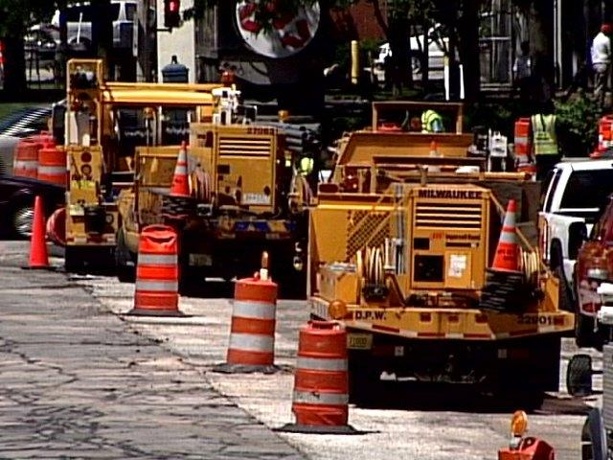
by Haley Sinklair
Special Perspective to the MacIver Institute
Legislation soon to be introduced by Rep. Rob Hutton (R-Brookfield) would eliminate Wisconsin’s prevailing wage law to allow for greater competition in the bidding process for public works projects financed by taxpayers. Rep. Hutton believes that competition among firms looking to win government construction contracts will help to hold down costs and better reflect market conditions, saving taxpayers money.
Currently, Wisconsin’s prevailing wage law mandates that workers employed on public works projects receive compensation according to a small sampling of wages paid to workers on similar projects in the area.

This arbitrary establishment of wage rates requires contractors to pay workers more than what the market requires, according to Hutton.
“The elimination of prevailing wage will provide local governments with a critical tool to reduce costs associated with capital budgets,” commented Rep. Hutton. “Any discussion about additional investments in Wisconsin’s infrastructure must include prevailing wage reform.”
Currently, 18 states have no prevailing wage law.
Wisconsin has three different prevailing wage laws covering different types of public works projects. The first two laws, enacted in 1931, cover projects bid by a state agency and state highway and bridge projects. The third law, enacted in 1933, covers projects bid or negotiated by a local governmental unit. These laws were enacted in an effort to protect the wages of certain workers during the Great Depression.
To determine prevailing wage rates, the Department of Workforce Development (DWD) is required to conduct an annual survey that includes hourly base wage and hourly fringe benefit rate, among other information.
In 2014, DWD only received 1,774 valid survey responses of the 18,673 that were sent out. This figure represents less than 10% of the industry. Information from the surveys for the period June 1, 2013 to May 31, 2014 was used to determine the prevailing wage rate for 2015.
In determining the prevailing wage, DWD uses two methods.
The first uses the highest 51% of total package (pay and benefits) hours reported and then averages them to determine a rate by county. If there is not enough county data to meet a minimum of 500 hours worked, data is included from neighboring counties. If data from neighboring counties still fails to reach a minimum of 500 hours worked, counties contiguous to those neighboring counties are added. If the data still fails to reach a minimum of 500 hours worked, the prevailing wage for that county is then based off of statewide data.
Using this method could mean that a project in a northern Wisconsin county could be based off of wage data from Dane County if not enough local data is available.
The second method uses the same tier system, but if one total package makes up more than half of the total hours worked in a profession in that county, that wage automatically becomes the prevailing wage rate.
A 2013 study on Michigan’s prevailing wage law found that similar legislation could have saved the state $225 million annually on school district and higher education projects alone.
Dane County Executive Joe Parisi released a statement Monday saying, “The prevailing wage law is one of the most important protections for the hard working people in Wisconsin’s construction industry,” and that if the law is eliminated, “a race to the bottom of the wage scale will begin; quality and safety will suffer.”
Hutton’s legislation is currently being drafted by the Legislative Reference Bureau and is likely to be introduced in the coming weeks.